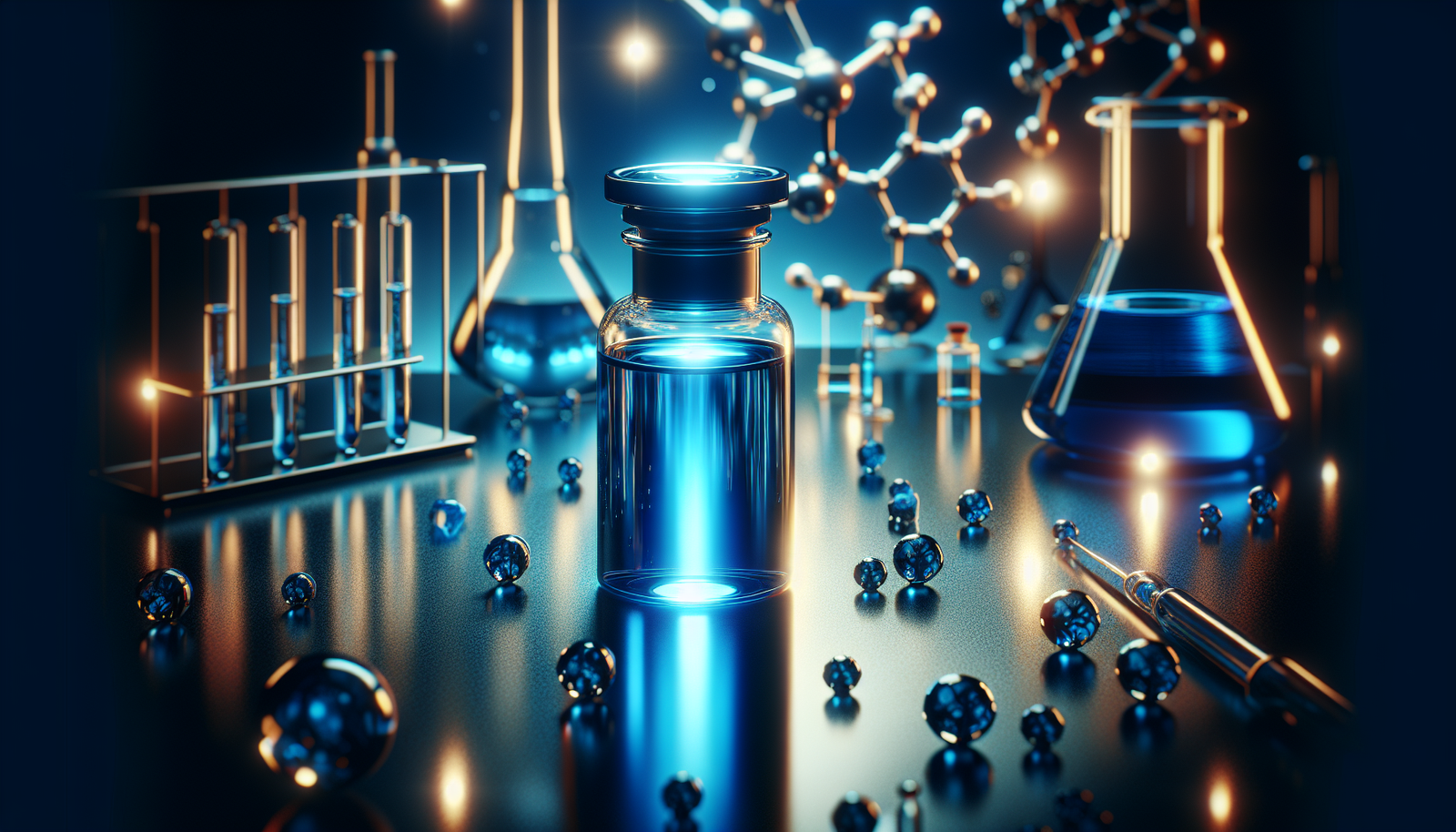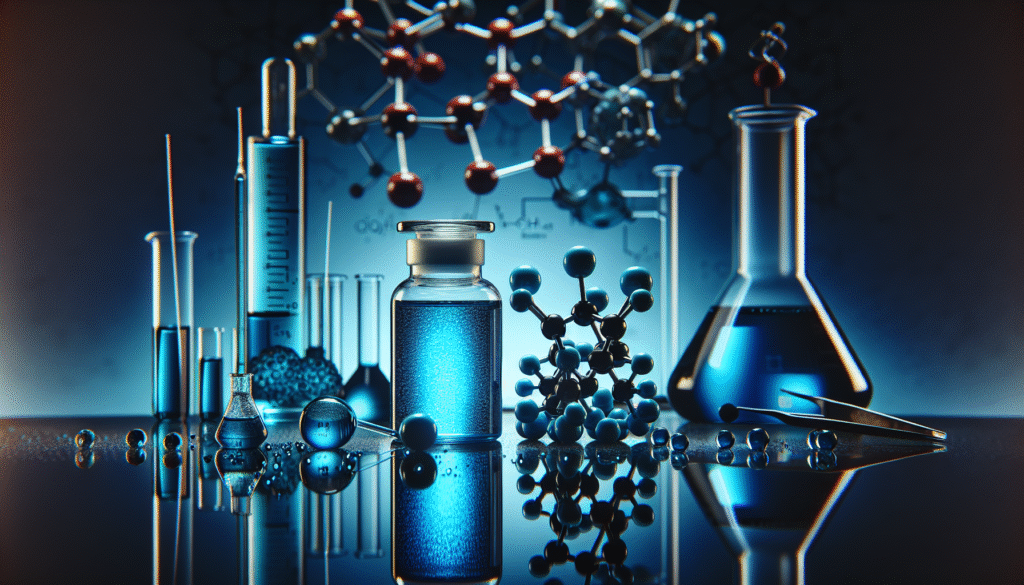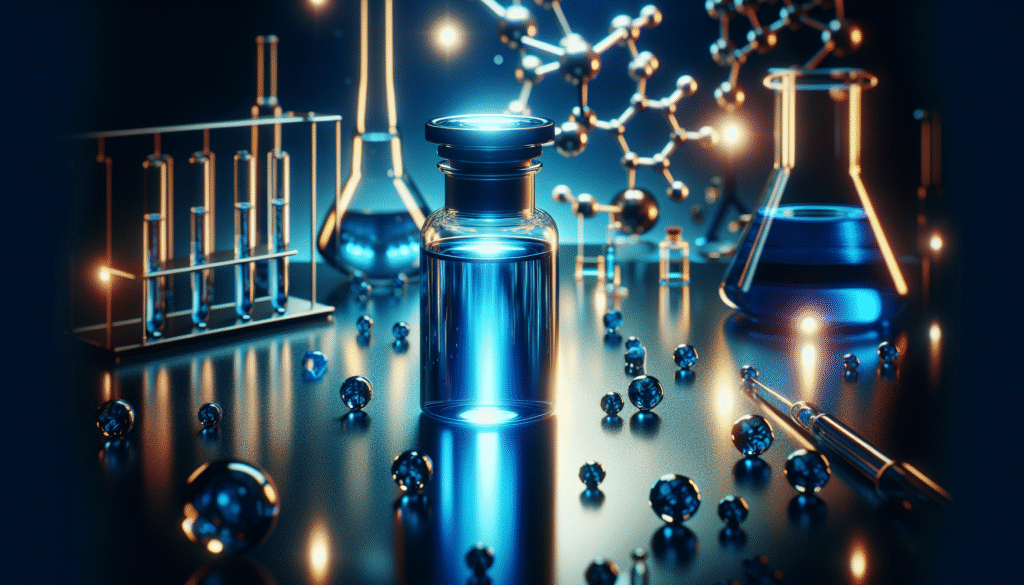
Have you ever considered how a single dye, often used in histology laboratories, could play a pivotal role in redox chemistry? Methylene Blue is not just a colorant; its implications extend far beyond the superficial realms of staining. It possesses intriguing properties that have significant implications in various scientific fields. This article will provide a comprehensive examination of Methylene Blue, delving into its chemical structure, redox properties, applications, and much more.

Understanding Methylene Blue
Methylene Blue, chemically known as methylthioninium chloride, was first synthesized in the late 19th century. Initially used as a dye, it has since been recognized for its applications in biology and medicine. This compound has the ability to accept and donate electrons, making it a key player in redox reactions.
Chemical Structure
The chemical structure of Methylene Blue comprises a phenothiazine core with an additional dimethylamino group. The presence of these functional groups facilitates its interaction with various biological systems.
- Molecular Formula: C16H18ClN3S
- Molar Mass: 319.85 g/mol
The structure consists of a planar, aromatic system that allows for easy electron delocalization, leading to the compound’s redox activity.
Redox Properties
At the heart of Methylene Blue’s utility lies its redox chemistry. The ability to switch between oxidized and reduced forms is what makes this compound particularly fascinating.
-
Oxidized Form: In its oxidized state, Methylene Blue exists as a blue cation. This form is electron-deficient and can accept electrons from reducing agents.
-
Reduced Form: Upon reduction, it transforms into leucomethylene blue, a colorless compound. This reaction occurs through the addition of electrons, triggering a series of biochemical responses.
Understanding these transformations is essential for leveraging Methylene Blue in various applications.
Methylene Blue in Biological Systems
Methylene Blue’s significance in biological systems is multi-faceted. It plays an essential role in mitochondrial function, oxygen transport, and even in acts as a potential therapeutic agent.
Role in Mitochondrial Function
One of the most interesting aspects of Methylene Blue is its effect on mitochondrial respiration. It acts as an alternative electron carrier in the electron transport chain, assisting in ATP production.
- Mechanism: Under hypoxic conditions, Methylene Blue can facilitate electron transport, ensuring that the production of ATP continues despite reduced oxygen availability. This property has sparked interest in its use for conditions related to mitochondrial dysfunction.
Therapeutic Applications
Beyond its roles in cellular respiration, Methylene Blue demonstrates potential therapeutic applications.
-
Alzheimer’s Disease: Research has shown that Methylene Blue can inhibit tau aggregation and improve cognitive function. This effect is related to its ability to enhance mitochondrial ATP production, thereby promoting neuronal health.
-
Methemoglobinemia Treatment: The compound has been historically used as an antidote for methemoglobinemia, a condition where hemoglobin is altered and cannot effectively transport oxygen. Methylene Blue facilitates the reduction of methemoglobin back to its functional form.
Antimicrobial Properties
Methylene Blue also exhibits antimicrobial properties, which can be harnessed in various applications.
- Mechanism: The dye induces oxidative stress in microbial cells, leading to cell death. This mechanism has made it valuable in treating infections and as a disinfectant in certain medical applications.
Methylene Blue in Research
Methylene Blue is a versatile tool in scientific research, particularly in the realms of biochemistry, microbiology, and pharmacology.
Applications in Laboratory Settings
In laboratory settings, Methylene Blue serves multiple purposes, from cell staining to quantifying various biological parameters.
-
Cell Staining: Its affinity for nucleic acids allows Methylene Blue to highlight cellular structures under a microscope, aiding in visualization.
-
Redox Indicator: The dye can act as a redox indicator in titrations, providing visual cues during chemical reactions.
These applications underscore the compound’s versatility and importance in experimental protocols.
Methylene Blue in Environmental Science
The environmental implications of Methylene Blue are equally compelling.
-
Water Treatment: Its ability to degrade organic pollutants makes Methylene Blue valuable in wastewater treatment processes. The dye’s redox properties facilitate the breakdown of various contaminants, contributing to cleaner water initiatives.
-
Ecotoxicology Studies: In ecotoxicology, Methylene Blue serves as a marker for understanding the impact of pollutants on aquatic ecosystems.
Safety and Toxicology
Despite its numerous applications, Methylene Blue is not without safety considerations.
Toxicological Profile
While generally considered safe in controlled environments, there are potential side effects associated with Methylene Blue.
-
Dosage Concerns: High doses can lead to adverse effects, including serotonin syndrome, especially when combined with other serotonergic drugs.
-
Allergic Reactions: Some individuals may experience allergic reactions, necessitating careful monitoring during clinical use.
Understanding these safety profiles is crucial for researchers and practitioners who employ Methylene Blue in various contexts.

Future Directions in Methylene Blue Research
As research continues, new and innovative uses for Methylene Blue are emerging.
Expanding Therapeutic Applications
Recent studies suggest that Methylene Blue may have potential in treating various other conditions beyond those traditionally associated with the compound.
-
Cancer Treatment: Preliminary research indicates that Methylene Blue may inhibit tumor growth through its redox activity, warranting further exploration in oncology.
-
Neuroprotection: Ongoing investigations aim to unlock its potential neuroprotective effects, which could have implications for conditions such as Parkinson’s disease.
Innovations in Drug Delivery
Advancements in drug delivery systems may also play a significant role in enhancing the efficiency of Methylene Blue as a therapeutic agent.
- Nanoparticle Utilization: Using nanoparticles to deliver Methylene Blue directly to targeted tissues could improve efficacy while minimizing side effects.
Conclusion
In summary, Methylene Blue is a multifaceted compound with a rich history and a promising future. Its role in redox chemistry extends to numerous biological systems, making it a valuable asset in research and clinical settings. Understanding its properties, applications, and safety considerations are essential for harnessing its full potential. As the scientific community continues to explore this compound, new discoveries may further solidify Methylene Blue’s position as a cornerstone in redox chemistry and beyond.
As research progresses, you may find Methylene Blue continues to inspire innovations across scientific disciplines, offering pathways to novel treatments and applications. Whether in a lab or a clinical setting, the implications of Methylene Blue remain profound, providing a deeper appreciation for the intricacies of chemical interactions and their biological significance.